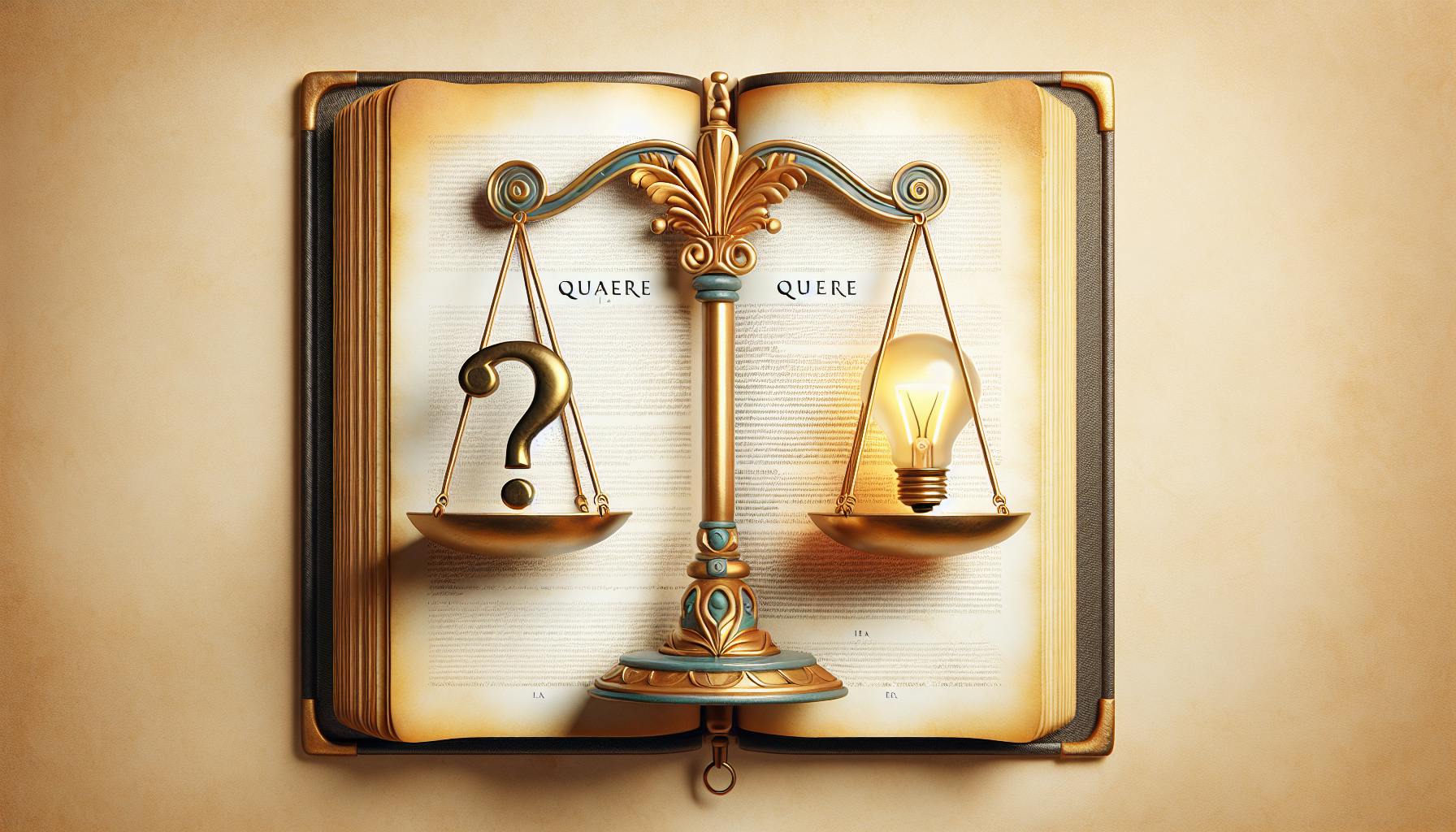When witnesses take the stand, their behavior can significantly impact legal proceedings.
Understanding the differences between hostile and friendly witnesses - as well as strategies for handling them - can help attorneys optimize case outcomes.
In this post, we'll define hostile and friendly witnesses, analyze their contrasting dynamics and credibility issues, and review cross-examination techniques and question types to manage witness comportment for your legal advantage.
Introduction to Witness Behavior in Court
Witnesses play a crucial role in legal proceedings by providing testimony and evidence. There are two main categories of witnesses - hostile witnesses and friendly witnesses.
A hostile witness demonstrates bias against the party that called them to testify, whereas a friendly witness willingly cooperates with the examining counsel. Understanding the differences in behavior between these two witness types is important, as it impacts case outcomes.
Understanding the Hostile Witness Meaning in Law
A hostile witness, also known as an adverse witness or Section 154 witness, is a witness that shows bias against the party that called them to the stand. As per the statutory definition, they refuse to give evidence, or give evidence that is contradictory or harmful to the party that summoned them.
Some key characteristics of hostile witnesses include:
- Showing clear bias against the examining counsel or party that called them
- Being confrontational, uncooperative or evasive during questioning
- Contradicting their own prior statements or declarations
- Providing testimony that weakens the case of the counsel that called them
Characteristics of a Friendly Witness
In contrast to a hostile witness, a friendly witness willingly cooperates with the counsel that calls them to testify. They demonstrate no overt bias and their testimony aligns with the examining counsel's case.
Key traits of friendly witnesses are:
- Willingness to answer questions from the examining counsel
- Testimony that strengthens the case of the counsel that called them
- No observable bias against the party that summoned them
- Cooperative and straightforward during questioning
In summary, hostile witnesses can weaken legal cases as their testimonies often contradict earlier statements or declarations. Friendly witnesses strengthen legal cases by cooperating fully and demonstrating no bias. Understanding these behavioral differences is vital for legal teams.
What are the characteristics of a hostile witness?
A hostile witness refers to a witness that shows hostility or opposition to the party who called them to testify. Here are some key characteristics of a hostile witness:
-
They give testimony that is unfavorable to the party who called them to testify. Their testimony often aligns more with the opposing party's version of events.
-
They may contradict statements they previously made or refuse to answer questions from the attorney who called them to testify.
-
They exhibit antagonistic, argumentative, or evasive behavior when the attorney questioning them is the one who called them as a witness.
-
The court may declare them a hostile witness, allowing the attorney who called them to ask leading questions on direct examination. This departs from normal procedure where leading questions are only allowed on cross-examination.
-
Their credibility may come under scrutiny. Attorneys often look to challenge or undermine the testimony of hostile witnesses.
-
Hostile witnesses may have hidden biases or motives underlying their antagonism, such as ties to the opposing party. Their hostility signals they likely have information damaging to the party that called them.
So in summary, hostile witnesses demonstrate clear opposition and lack of cooperation with the party that summoned them to testify, prompting attorneys to treat them more like a witness for the opposing side. Their antagonistic behavior and contradictory testimony characterize hostile witnesses in legal proceedings.
What is a friendly witness?
A friendly witness is a witness that is called to testify by the party that asked them to appear in court. This means that the lawyer calling the witness expects that the witness' testimony will help their case.
Some key things to know about friendly witnesses:
-
They are witnesses that are friendly to the interests of the party that called them to testify. Typically this would be witnesses called by the plaintiff or prosecution.
-
The lawyer calling a friendly witness may ask them non-leading questions on direct examination. This means the lawyer can ask open-ended questions that allow the witness to fully explain their answers.
-
The opposing counsel cannot ask leading questions or treat a friendly witness as hostile on cross-examination. They must ask non-leading questions that allow the witness to fully explain their answers.
-
If a friendly witness ends up giving testimony that harms the case of the party that called them, that party cannot then treat the witness as hostile. However, they may impeach the witness's credibility by bringing up prior inconsistent statements they have made.
So in summary, a friendly witness is expected to provide testimony beneficial to the party calling them, and therefore can be asked non-leading questions by that party's lawyer on direct examination.
What is the difference between a hostile witness and an unfavorable witness?
A hostile witness is a witness that displays antagonism or is unwilling to cooperate with the attorney conducting the direct examination. This occurs when the witness's testimony appears to contradict the legal position of the party that called them to testify.
In contrast, an unfavorable witness is simply a witness whose testimony is not helpful or favorable to the party that called them, but they are not overtly uncooperative or antagonistic like a hostile witness.
Some key differences:
-
Hostile witnesses exhibit clear antagonism, evasiveness, or contradiction during direct examination. Unfavorable witnesses provide testimony that harms the party that called them, but without clear antagonism.
-
With a hostile witness, the attorney can ask leading questions during direct exam to try to elicit useful testimony. This is not allowed with an merely unfavorable witness.
-
The attorney calling a hostile witness may be able to impeach or discredit them through methods like introducing prior inconsistent statements. This is usually not an option with an unfavorable witness.
-
Showing that a witness is actively hostile rather than just unfavorable can more significantly undermine their credibility and the opponent's case in the eyes of the judge or jury.
So in summary, a hostile witness displays outward antagonism and defiance that allows the calling attorney more leeway to extract testimony. An unfavorable witness simply provides unhelpful testimony that harms the calling party's legal position.
How is a hostile witness treated differently?
Unlike questioning of friendly witnesses, attorneys are allowed to ask leading questions of hostile witnesses. A leading question is a question that tends to suggest its own answer or restricts the witness to a simple yes or no response.
For example, a hostile witness may be asked:
"Isn't it true that you saw the defendant at the scene of the crime?"
Whereas a friendly witness would be asked:
"What, if anything, did you see the defendant doing at the scene of the crime?"
Leading questions are generally prohibited during direct examination of friendly witnesses out of concern that the examining attorney will unfairly coach the witness into a particular response. However, they are permitted during cross-examination of a hostile witness in order to challenge their credibility or version of events.
The rationale is that a hostile witness is unlikely or unwilling to provide complete, forthcoming answers without some degree of leading by the examining attorney. So leading questions help draw out testimony from a difficult or adverse witness.
Under Federal Rule of Evidence 611 and similar state rules, the court has discretion to allow leading questions as necessary to develop the testimony of a hostile witness. So if a witness proves uncooperative, evasive or reluctant on the stand, the judge may declare them "hostile" and permit the use of leading questions to obtain responsive answers.
sbb-itb-585a0bc
Witness Behavior: Hostile vs Friendly Dynamics
Identifying Evasiveness in Hostile Witness Testimony
Hostile witnesses may use various tactics to evade questions and obstruct the examination process. For example, they may give vague, ambiguous responses lacking key details. When pressed for clarification, they may become argumentative or claim not to recall events. Hostile witnesses may also make frequent irrelevant digressions to avoid directly answering questions.
Identifying evasive behavior is key for counsel to confront the witness on inconsistencies and information gaps. Calling out obvious evasions may undermine hostile witness credibility. However, counsel must avoid aggressive badgering that could alienate the jury. Skillful questioning paired with meticulous preparation is essential.
Confrontational Attitude: The Hostile Witness in Action
Hostile witnesses often exhibit confrontational, stubborn attitudes on the stand. For instance, they may respond to questions with sarcasm or contentious remarks. Some hostile witnesses actively taunt or insult examining counsel.
While such behavior may frustrate counsel, losing one's composure could damage perceptions among the jury. It is wise to remain calm and professional when addressing hostile outbursts. Letting hostility speak for itself without reaction can be the most effective approach.
The Credibility of Hostile Witness: Bias and Misleading Information
The hostility of adverse witnesses inevitably calls their credibility into question. Their very posture suggests a biased agenda or willingness to mislead. As such, counsel must identify and confront areas where testimony seems deliberately selective, exaggerated, or omits key details that weaken the witness’s position.
Pointing out internal contradictions, contrasting accounts with external evidence, and questioning the feasibility of claims can undermine hostile witness credibility. However, counsel should take care not to allege outright perjury without sufficient basis. Such accusations could backfire before a skeptical jury.
Cross-Examination of the Hostile Witness
Leveraging Prior Inconsistent Statements Under F.R.E. 611
Lawyers can undermine a hostile witness' credibility by highlighting contradictions between their testimony and their prior statements. Under the Federal Rules of Evidence 611, attorneys can cross-examine witnesses about these inconsistencies.
For example, if a witness previously stated they saw the defendant at the crime scene but now testifies they did not, the lawyer could confront them with their prior statement. The attorney might say, "But did you not previously tell the police you saw the defendant there that night?" This draws attention to the change in testimony.
By exposing these contradictions, lawyers cast doubt on the reliability and truthfulness of hostile witnesses. Pointing out inconsistencies makes juries question whether to believe the witness's new version of events. It gives attorneys grounds to argue the testimony is not credible.
Introducing External Evidence to Impeach a Hostile Witness
Beyond prior inconsistent statements, lawyers can also present external evidence demonstrating a hostile witness lied or cannot be trusted. This may include documents, recordings, photos, or testimony from other witnesses proving inaccuracies.
For instance, if a hostile witness denies being at the crime scene but security footage shows them there, the lawyer can introduce the video. This provides solid proof that the witness lied under oath. Similarly, other eyewitnesses could testify they saw the hostile witness at the scene, belying their testimony.
Like highlighting contradictions, presenting external evidence allows attorneys to attack hostile witnesses' credibility. It offers concrete examples of dishonesty judges and juries can evaluate. The more lawyers can demonstrate witnesses deliberately misled the court, the more it hurts their believability. This ultimately weakens the persuasive impact of hostile testimony.
Effective Direct Examination of a Friendly Witness
When conducting a direct examination of a friendly witness, counsel should focus on establishing a rapport and eliciting clear, supportive testimony.
Building a Rapport with the Friendly Witness
To build an effective rapport with a friendly witness:
-
Greet the witness respectfully and help them feel comfortable on the stand. Offer them a glass of water or assist them with adjusting the microphone if needed.
-
Thank the witness for their time and cooperation. Express appreciation for their testimony.
-
Speak to the witness clearly and make eye contact. Avoid legal jargon and ask straightforward questions they can easily understand.
-
Listen closely to the witness's responses. Seek clarification if a response is vague or unclear.
Friendly Cross-Examination: A Strategic Approach
When cross-examining a friendly witness, counsel aims to reinforce the witness's credibility and helpful testimony. However, directly leading the witness can appear collusive. Instead:
-
Ask open-ended questions that allow the witness to elaborate on helpful details. For example, "Please describe what you observed when..."
-
Raise hypothetical scenarios related to the facts that enable the witness to reinforce their testimony.
-
Conclude by summarizing the key supportive details the witness provided. Express gratitude for their cooperation without overt flattery.
Throughout friendly witness examination, counsel should avoid the appearance of coaching the witness. The goal is to establish trustworthiness and extract the full value of helpful testimony through strategic, subtle questioning.
Legal Strategies for Handling Hostile Witnesses in Court
Navigating hostile witness testimony requires composure and preparation. Here are some key techniques for handling hostile witnesses effectively:
Maintaining Composure with a Hostile Witness
When facing a hostile witness, it's important for examining counsel to remain calm and professional. Reacting emotionally or aggressively will undermine credibility. Instead:
- Speak slowly, clearly and make eye contact to establish control
- Allow the witness time to provide complete answers before asking follow-up questions
- Politely address disrespectful responses and redirect the witness to focus on answering questions
Staying disciplined and persistent, despite hostility, is key to extracting useful testimony.
The Art of Leading Questions with a Hostile Witness
With a hostile witness, the examining counsel has more flexibility to ask leading questions on direct. However, boundaries still exist around leading witnesses:
- Leading questions must elicit facts the witness would ordinarily testify to
- Avoid questions that put words into the witness's mouth
- Be strategic by mixing open and leading questions
Carefully phrased leading questions can steer a hostile witness toward admissions that support the examiner's case theory.
Hostile Witness in Civil Cases: Unique Challenges
Hostile witnesses in civil litigation bring special challenges. Since civil cases have a lower burden of proof, hostile witness testimony can profoundly impact the outcome.
When facing a hostile witness in a civil case:
- Thoroughly investigate the witness's background and ties to the opposing party
- Anticipate topics that may trigger hostility and prepare leading questions
- Be ready to impeach on key facts with the witness's prior sworn statements
Understanding what triggers a hostile witness will allow civil attorneys to conduct a controlled and disciplined direct examination.
The Influence of Witness Behavior on Legal Proceedings
When a Hostile Witness Damages Their Own Side's Credibility
A hostile witness can undermine their own credibility and reliability in the eyes of the judge and jury through their demeanor and behavior on the stand. This occurs when a witness displays a combative, argumentative, or flippant attitude that conveys they are not taking the proceedings seriously.
For example, a witness may scoff at questions, provide short or sarcastic responses, or act dismissively towards the questioning attorney. This signals to the court that the witness lacks respect for the process and calls into question the veracity of their testimony. As a result, the jury may dismiss or doubt claims made by that witness, weakening the case of the party that called them.
Attorneys can attempt to curb hostile behavior through repeated objections, but once a witness adopts an obstinate posture, the damage to their credibility often cannot be undone. This highlights the need for careful witness preparation by legal teams prior to trial.
Hostile Witness Testimony Bolstering the Opponent's Case
There are risks involved when calling a hostile witness that may end up benefiting the adversary. While the questioning attorney can ask leading questions, they cannot control the testimony provided.
In some cases, a hostile witness may reluctantly reveal facts that support the opponent's version of events or contradict the narrative being put forth by their own side. For example, if a plaintiff's attorney calls the defendant as a hostile witness but fails to elicit testimony helpful to their case, the testimony obtained may instead reinforce the defense's position.
Likewise, a hostile expert witness may stubbornly stand by conclusions that oppose the agenda of the attorney examining them. This can serve to validate the adversary's claims regarding key technical matters, lending them increased credibility.
While hostile witnesses can sometimes be used tactically, there is always a danger that their testimony will bolster rather than damage the case against which they are called. Attorneys must weigh risks versus potential rewards when deciding whether to call a hostile witness.
Conclusion: Managing Witness Behavior for Optimal Court Outcomes
The key differences between hostile and friendly witnesses lie in their behavior and impact in court.
Hostile witnesses exhibit antagonistic behavior towards the party that calls them, often providing testimony that undermines that party's case. Strategies for managing hostile witnesses include:
- Careful phrasing of non-leading questions to extract factual information
- Impeaching the witness's credibility through prior inconsistent statements
- Getting the witness to admit facts that support your case
Friendly witnesses provide testimony that supports the case of the party that calls them. Best practices for friendly witnesses include:
- Asking open-ended questions to fully draw out helpful testimony
- Following up on important points with leading questions
- Highlighting key parts of testimony in closing arguments
The optimal approach is to thoroughly prepare for all witness testimony, understand distinctions in behavior, and adeptly adjust questioning strategies to extract the most helpful facts for your case. Managing witness behavior and testimony can make or break trial outcomes.


